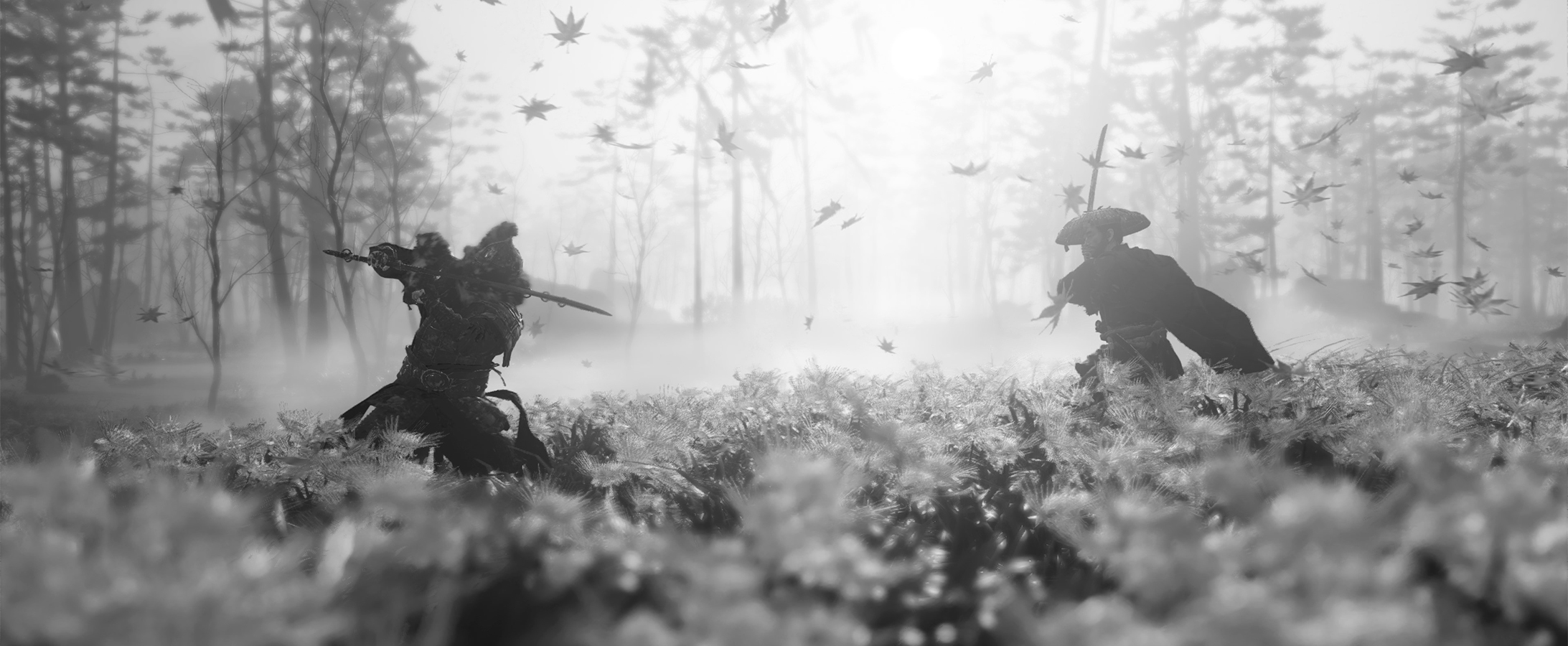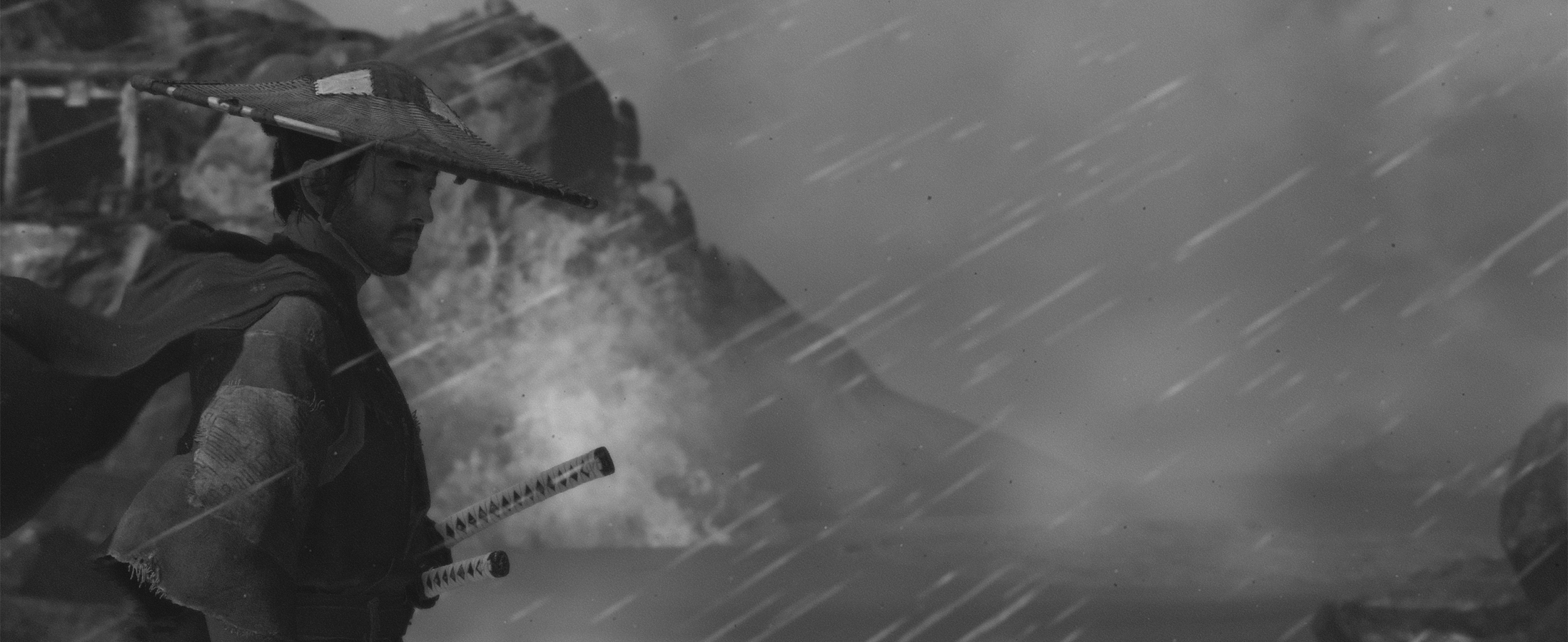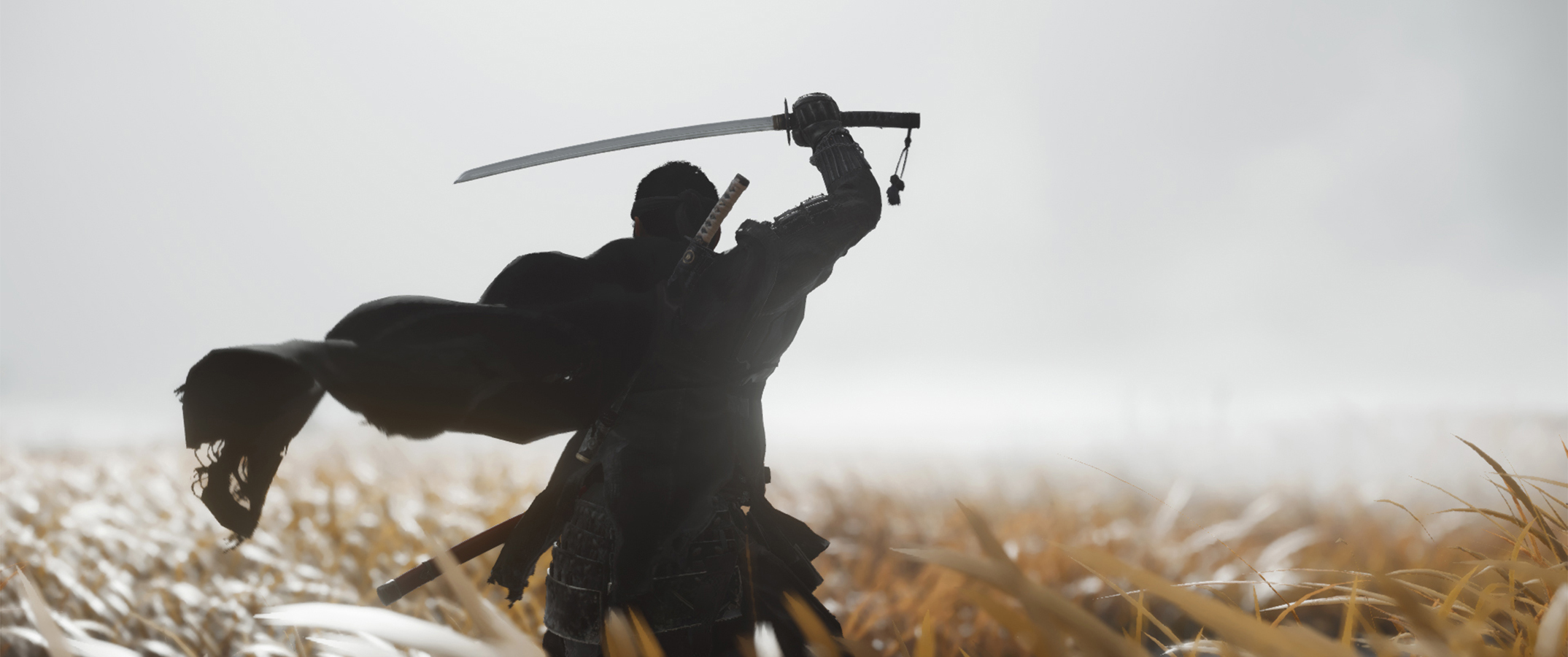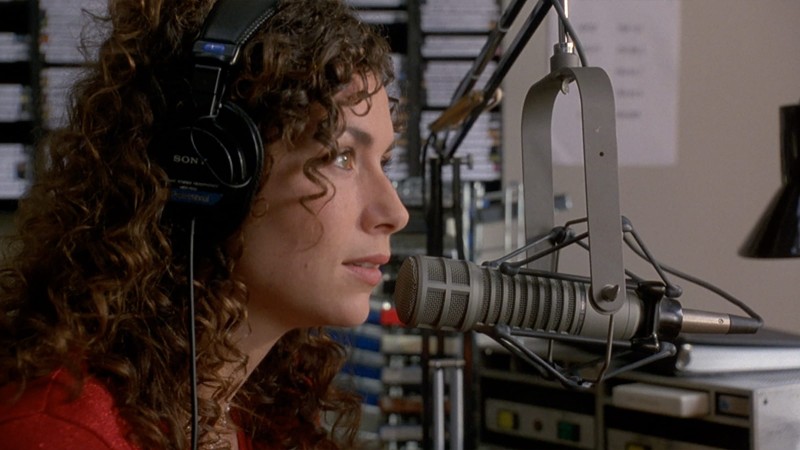All in the Game: An Interactive Homage to the Samurai Genre

As video games have evolved into a technological and economic behemoth, they have attracted some consumer attention and spending away from movies. In part to appeal to filmgoers accustomed to the high production values of the big screen, large-budget games often aspire to a cinematic aesthetic and a degree of spectacle, with elaborately staged narrative sequences featuring celebrity actors. Players, though, have not always embraced this approach. Film grammar can certainly be useful for lending an emotional dimension to the imaginary worlds that designers create, but it’s rare for any game to succeed as both a narrative and an interactive experience.
Ghost of Tsushima, released this summer for PlayStation 4 (the most successful of the latest generation of home systems, with over 100 million consoles sold), is unique in its layering of visual detail and narrative structure onto well-honed game design. If you’ve ever watched a samurai film and been struck by specific images—reeds billowing in the wind, silhouettes perched stoically on the horizon—you may be surprised at how immersively this game replicates the visual economy of the genre while also evoking the human emotions of warriors grappling with duty and sentiment.
Set during the thirteenth-century Mongol invasion of Japan, Ghost of Tsushima pays homage to classic chanbara films—especially those by Akira Kurosawa and Masaki Kobayashi—and follows Jin Sakai, an orphaned samurai torn between honor and survival and adopting increasingly desperate tactics in his fight to repel the enemy. Tsushima’s developers, Sucker Punch, a Seattle-area studio best known for the superhero game series Infamous, have infused this complex story with elegant game mechanics distilled from the past decade of open-world game design, allowing the player to roam in a large virtual space and choose freely from a set of missions and tasks.
I spoke with Tsushima directors Nate Fox and Jason Connell about the films that inspired their work and the ways that the art of game design draws from moviemaking.
I’m interested in the ways this project intersects with classic samurai movies. I’ve never played a game made by Western developers that was set in Japan and has this degree of detail in the world building. I thought we could start by hearing more about the genesis of the project and how feudal Japan became the setting.
Nate Fox: We are massive fans of the “wandering samurai” experience represented in films like Yojimbo or Sanjuro. And it seemed like a good fit with an open-world game, where you have the freedom to walk into a town as a samurai and then solve problems that people have there with your wits and the edge of your sword. The fantasy is very powerful. Games are interactive, and they are just the right way to make experiences that were previously exclusive to cinema come to life on consoles right now.
Jason Connell: We played around with different ideas, but it was pretty obvious that the samurai concept had the most energy and passion behind it. The ideas of how it could play and how it could look just kind of started writing themselves. There was so much great entertainment to pull from but not an overwhelming number of prior games, and that made it more exciting because we felt like we could go into uncharted territory.
What was your familiarity with samurai films and Japanese cinema before you started working on this game?
Nate: When I was growing up, my best friend’s family was from Japan. One night, his mom was over at our house watching this miniseries called Shogun with my mom, and she acted as an interpreter and called out what was wrong. I felt like the curtain was being parted a little bit on this place that I’d only heard about from [my friend] Keita.
Later we saw the movie Yojimbo. While the sword fighting was exciting, it was the scene where a friendly dog walks by with a severed hand in its jaws that really stuck with me. It was so much rawer than anything I’d seen in American films. I was hooked!
Ever since, I’ve been very interested in these movies that I feel a connection to through my relationship with those people who were formative in my childhood. And you can’t watch these classic samurai films and not get excited by the sparseness and the economy of the emotion and the storytelling. Everything feels like it’s been stripped down to the most essential components, and as a creator I admire that kind of design and its negative space. American westerns come the closest to it, but you’re not going to ever beat something like Seven Samurai for elegance.
Jason: My story is maybe far less interesting than Nate’s. I grew up in a rural area of Alaska, and my father loved Star Wars and we watched it religiously. I went into art school and wanted to make video games and then got into photography, and at one point I realized that Star Wars feels very similar to westerns. And then I dug into that and was like, wait a minute, all of this actually comes from something else. I found The Hidden Fortress and went into the depths with Kurosawa. Movies like Ran transformed my feelings about cinematography and photography.

Images from Ghost of Tsushima, courtesy of Sony Interactive Entertainment







